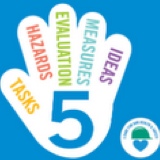Title Page
-
Site conducted
-
Audit Number
-
Conducted on
-
Auditor
-
Auditee
Scope
-
Audit to cover the design and development process, this covers the information from the customer as a design brief through to the approval of the final design by the customer. It should be noted that the design process at Kirkstall does not cover all the validation processes or final product ownership, this is conducted by the customer. This audit covers the requirements of both ISO 9001 and ISO 13485.
Customer Design Scope
-
How does the customer communicate a design requirement to you?
-
Do you set and agree a timeline with the customer on the design or development project?
-
What do you need from the customer to start the design process?
-
What do you do if you are missing some of this information?
-
What would you do if this information is not clear or could be miss-understood?
-
Do you document the customers requirements?
- Yes
- No
- N/A
-
What documents do you create?
-
Take a sample of these documents - Provide information.
-
How do you define functional and performance requirements?
-
Are the requirements Clear and measurable?
-
Are these agreed with the customer?
-
How do you communicate and document this with the customer?
-
Is a Risk assessment conducted during the design stage?
-
Is this communicated to the customer?
-
Do you need require the customer to agree the scope of design before you start the design process?
-
How is this communicated to the customer?
-
How is this documented in the system?
-
What happens if the customer requests a change to the design?
-
Is this documented with the impact of the change?
-
Would or Could this affect the design time and cost of the design?
-
Would any change require approval from the customer?
-
How is this costed to the customer?
-
undefined
Internal Design Scope
-
How would an internal Design request get communicated to you?
-
What would define the difference between a design project and a development Project?
-
Would this trigger a customer change?
-
What would trigger a customer change requirement?
-
How would a customer change be conducted?
-
Would this need to be approved before any changes are implemented?
-
How would the approval be documented?
Design Process
-
What steps are taken during the design stage?
-
Are revision numbers / Letters used if the design is updated during this process?
-
Is the design brief updated during the design process?
-
Is this communicated back to the customer for approval?
-
How is this documented?
-
What do you do if a requirement is not possible during the process?
-
How do you check that the design meets the customer requirements?
-
How is this documented?
-
What would be created at the end of the design process?
-
Who approves the final design?
-
How is this communicated and documented?
-
Once the final design is completed who would validate the design before release to the market?
-
Do we get any feed back on the design after this stage?
-
Who owns the design once it has been completed and approved?
-
How would a prototype product be communicated to manufacture?
-
Once a design is approved, how would this be communicated to production?
-
Can you tell in production if a design has been approved for manufacture?
-
What other information is created once the design is pasted to production?
-
When reverse engineering a product, are any other steps taken during the design process?
Design Verification / Validation
-
How would we verify the design? How is this documented?
-
Would we validate the design in anyway?
-
Once the design has been approved who owns the design?
-
If the product is CE marked who is responsible for the regulatory requirements and safety of the product?








